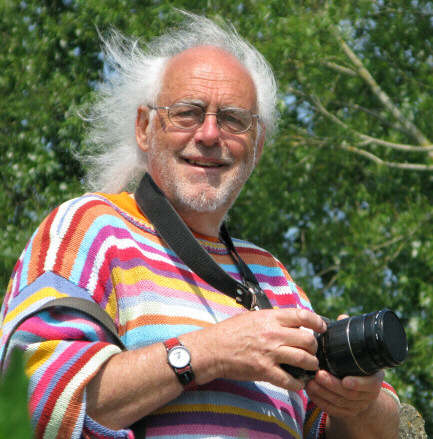 This Is Not A
BLOG!
This Is Not A
BLOG!
Date: 25/06/13
The Man Who Dug The Past

Michael Antony Aston
Archaeologist
b. 1 July 1946, d. 24 June 2013
Growing up when I did, the public image of archaeologists was that of crusty old academics such as Mortimer Wheeler or cultural grandees such as Kenneth Clark standing in front of ruins of even greater antiquity than themselves and telling us - in a rather de haut en bas way - what learned people thought that those of us plebs who were sufficiently up ourselves to watch BBC2 ought to know.
Mick Aston did a hell of a lot to change that.
Even before he came to wider public notice on television, he gave numerous lectures in the Extra-Mural departments of Birmingham, Oxford and Bristol. But it was his involvement in Time Team which brought him to the attention of the public living in those places far removed from the University circuit. He helped devise the format for the programme - a team of archaeologists given just three days to investigate an unanswered question or mystery regarding the chosen site - and was its chief expert and site director for all bar the ill-fated final series of the show.
Not that he appeared to be any less of an eccentric than Wheeler or Clark: the sight of this bearded, wild-haired teddy bear of a man with a penchant for unreasonably colourful sweaters (see Exhibit 'A' above) would in itself have been sufficient to attract attention in a strobe-light factory. But it was his commitment to communicate which shone through. Seldom would an edition of Time Team go by without Mick - using his presenter friend Tony Robinson as a combined conduit, sounding-board and teaching aid - succeeding in explaining even some of the most abstruse aspects of the subject with clarity and, above all, a shining passion which illuminated and entertained in equal measure.
What was, to many of us, the great attraction of not just his style but his outlook on archaeology was that - unlike his television precursors who would think nothing of making an entire series based around people digging up masonry in an obscure part of Asia Minor - he was most in his element when dealing with the archaeology of everyday life, be it a Saxon village or hunting down the remains of an early part of the Industrial Revolution in his native West Midlands. The creation of the Big Dig, whereby amateurs from all over the country were encouraged to dig test pits in their own gardens to try to reveal something of a past which was relevant to them, was one of the key ways in which Mick Aston made a massive contribution to the widening of interest in archaeology in the UK.
Sadly, his association with Time Team ended in a certain amount of acrimony in 2012 when a bunch of bright young smarties decided to meddle with the style of the programme in a way which, in his view, took the focus away from the archaeology and more into the "Gosh! Wow!" school of presentation. His departure probably hastened the end of Time Team itself, with the twentieth and final series airing earlier this year.
(For another time, perhaps, is the discussion as to why shiny new people in charge of things seem always to want to impose themselves on their new domain by removing the elements from it which had made it thrive; ditto for the tendency of late for television executives to look at a successful and respected programme and think that it could be made even better by cutting its budget).
But the archaeology was what was always important to Mick Aston, and his enthusiasm and ability to explain in a lively and direct fashion was key to the renewed interest and respect given to his field. He helped make Time Team into one of those rare examples in recent times of 'must see' television for anyone with an interest in the world around them, particularly the bits under their feet.
For myself, had he been around on the box forty years ago, he might have led me to become an archaeologist; I missed out - others will not, because of him.

 This Is Not A
BLOG!
This Is Not A
BLOG!
